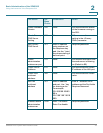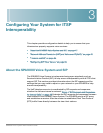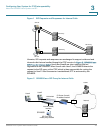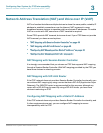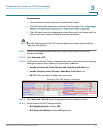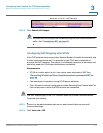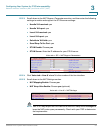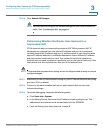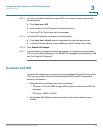
Configuring Your System for ITSP Interoperability
Network Address Translation (NAT) and Voice over IP (VoIP)
SPA9000 Voice System Administration Guide 49
3
Network Address Translation (NAT) and Voice over IP (VoIP)
NAT is a function that allows multiple devices to share the same public, routable, IP
address to establish connections over the Internet. NAT is present in many
broadband access devices to translate public and private IP addresses. To enable
VoIP to co-exist with NAT, some form of NAT traversal is required.
Some ITSPs provide NAT traversal, but some do not. If your ITSP does not provide
NAT traversal, you have several options.
• “NAT Mapping with Session Border Controller,” on page 49
• “NAT Mapping with SIP-ALG Router,” on page 49
• “Configuring NAT Mapping with a Static IP Address,” on page 49
• “Configuring NAT Mapping with STUN,” on page 51
NAT Mapping with Session Border Controller
It is strongly recommended that you choose an ITSP that supports NAT mapping
through a Session Border Controller. With NAT mapping provided by the ITSP, you
have more choices in selecting a router.
NAT Mapping with SIP-ALG Router
If the ITSP network does not provide a Session Border Controller functionality, you
can achieve NAT mapping by using a router that has a SIP ALG (Application Layer
Gateway). The WRV200 router is recommended for this purpose, although any
router with a SIP-ALG can be used. By using a SIP-ALG router, you have more
choices in selecting an ITSP.
Configuring NAT Mapping with a Static IP Address
If the ITSP network does not provide a Session Border Controller functionality, and
if other requirements are met, you can configure NAT mapping to ensure
interoperability with the ITSP.





